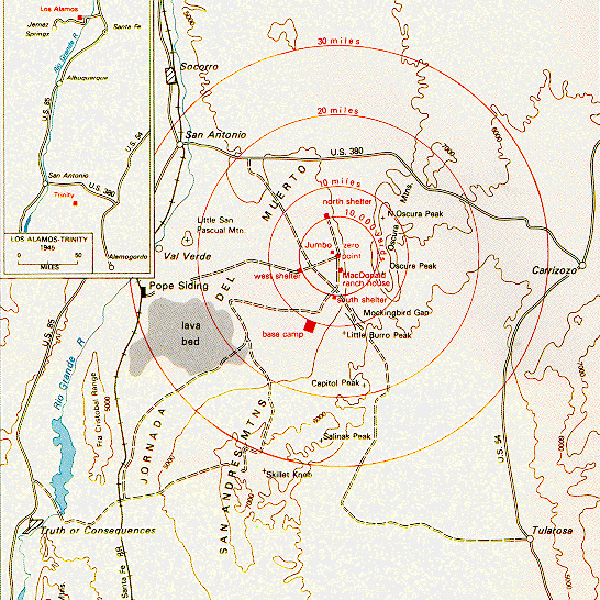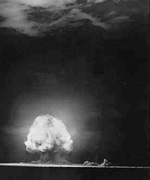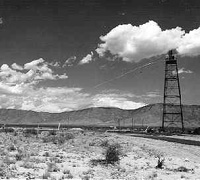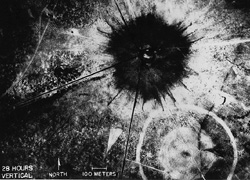In June 1942 the Manhattan Project was established by President Truman with a directive to design and construct a workable atomic bomb by the end of the war. The world’s greatest scientists were brought together with this singular goal, under the direction of Dr. J Robert Oppenheimer, in Los Alamos New Mexico.
The scientists developed a plutonium bomb, which worked by compressing plutonium into a critical mass, which would sustain a chain reaction. A location 230 miles south of Los Alamos in the Jornada del Muerto Valley was chosen for testing of the bomb. The site’s isolated setting and location in the already established Alamogodo Bombing Range made it the most practical test site. A portion of the bombing range was selected and code-named Trinity.
A ranch house located just two miles from ground zero was converted into a clean room for assembly of the bomb core. Once assembled the bomb was transported to the top of a steel tower erected at ground Zero. Three observation points with concrete and earth protection walls were set up 10,000 yards from ground zero from which the blast was triggered. Most of the scientists and support personnel watched the explosion from base camp located 10 miles southwest of ground zero.
On July 16,1945 at 5:29:45 a.m the first atomic bomb was tested, producing a 19 kiloton explosion. The shock from the blast broke windows 120 miles away and was felt at least 160 miles away. A bomb crater was created measuring nearly 2,400 feet across and 10 feet deep in places, the heat melted the desert sand under the tower turning it into a green glassy substance.
The story of Trinity did not become public until August 6, 1945 when the world's second nuclear bomb exploded over Hiroshima, Japan killing an estimated 70,000 people and a third bomb on August 9 at Nagasak killing thousands more. On August 14 the war in the pacific ended with Japan's surrender.Now a part of the white Sands missle test range, Trinity Site is a National
historic landmark and is opened to the public on the first Saturday in April
and October.




